Unity in Diversity
Case Study | UX/UI & Interactive Exhibition
— is an interactive exhibition that allows children to engage and learn about Indonesia’s culture through an immersive experience.

Role
UI/UX Designer
UX Researcher
Visual Identity
Art Director
Interactive Designer
Team
Valerie E. Lianggara (myself)
Skills
User Research
Product thinking
UI/UX Design
Visual Design
Art Direction
Interactive Exhibition
Tools
Figma
Adobe Photoshop
Adobe Illustrator
Blender (in progress)
Timeline
December 2020
The Challenge
We were tasked to design our own self-directed brief, where I chose to explore my personal cultural identity as an Indonesian. With the research question ‘how can interactive and experience
design be used to educate,
communicate and interact with our
(Indonesia’s) cultural identity to
preserve its heritage?’, the challenge involves creating an engaging user experience and an interactive that educates and encourages debate and discussion.
The Solution
GO TO PROTOTYPE
The extensive yet intimidating experience of having to design my own brief
revealed to me an ignorance and obliviousness towards my own identity. The
lack of awareness towards my own heritage was one I wanted to act upon. I soon found out that a lot of my Indonesian peers experienced the same thing, and the problem revolved around education, or the lack thereof.
This led to the decision of wanting to expand knowledge & access to
Indonesian cultural identity and
history by designing an experience
that young students love and has
education rigor.
GO TO PROTOTYPE
USER RESEARCH
Understanding
our users
To begin my research, I first reflected upon myself and questioned why I was so uncultured and out of touch with my own cultural identity. As someone who grew up in a very Westernized society, I looked into Indonesia’s history and came across the term ‘banana’, meaning yellow on the outside but white on the inside. It was part of Indonesia’s society to categorize ‘white’ as being superior, and realized how a lot of us struggle with our cultural identity.
From this, I conducted a Q&A session on Instagram with hopes of finding others who struggle with the same issue as me and how it has affected Indonesian youths of today. I asked if anyone has ever felt ‘whitewashed’
growing up, or if they thought it was
‘cooler’ to be westernized.
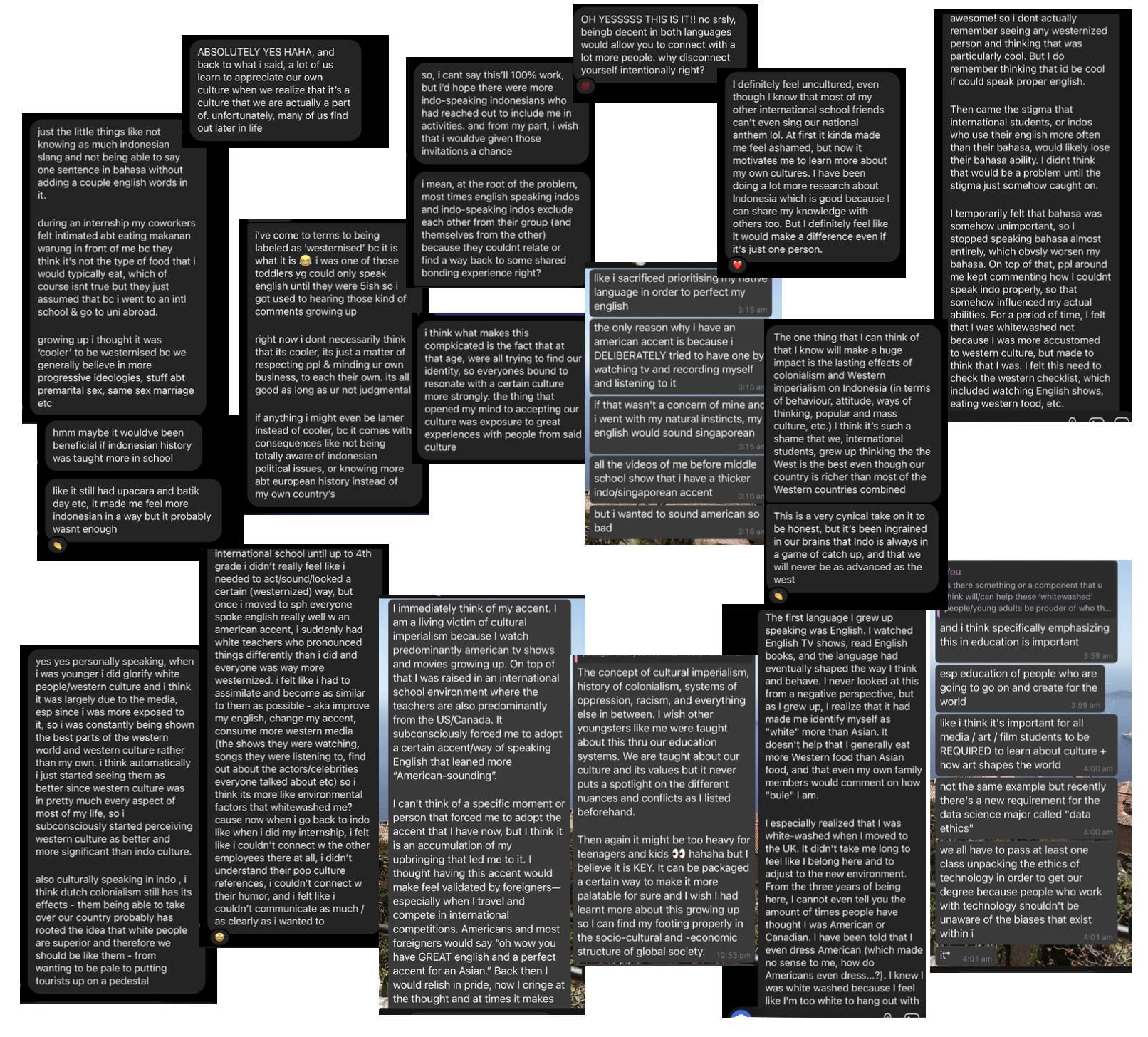
click to zoom!
As seen above, it is quite evident that the
majority of my Indonesian friends have
felt this way. This prompted numerous conversations with them, each explaining their thoughts and struggles regarding this issue. Acknowledging the problem, I identified the main problems highlighted from the conversations turned semi-structured interviews:
-
Lack of education
-
Sacrificing native language to perfect English
- Cultural disconnect
-
Upbringing/family
-
Lack of representation in media (Asian ≠ Success)
-
Unrealistic and westernized beauty standards
-
Sugarcoating Western culture/colonized mindset
I decided to focus on the lack of education aspect, as I strongly believe that education is the core element of our upbringing. From this conclusion, I narrowed down my target audience to children under 13. I continued my user research by calling my cousins
who were aged 8 and 10 living back
home in Indonesia. As they are attending an
international school, I asked them what
kinds of things they learnt in school.
Based on my findings, I came up with a user persona: Kayla Wijaya (Wijaya is a common last name in Indonesia).

Kayla Wijaya
Kayla is a 3rd grade student living in Jakarta, Indonesia. She loves to go to school, but isn’t fluent in Bahasa Indonesia despite being born and raised in Jakarta. In her spare time, she likes to play and watch movies on her iPad, where she can find educational and entertaining games and shows.
IDEATION
Affinity Mapping
My goals, through this user research,
were to:
Gain a better grasp of how users interact
with education overall and uncover pain
points in learning about Indonesian
culture and identity from a young age.
I then mapped out my observations
from user interviews in order to pinpoint
the underlying themes and trends from
research, and to better understand
that specific age group of users so
that I could narrow down the aspect of
learning in children’s lives that I wanted
to use and tackle. Here is the digital
version of the affinity diagram:
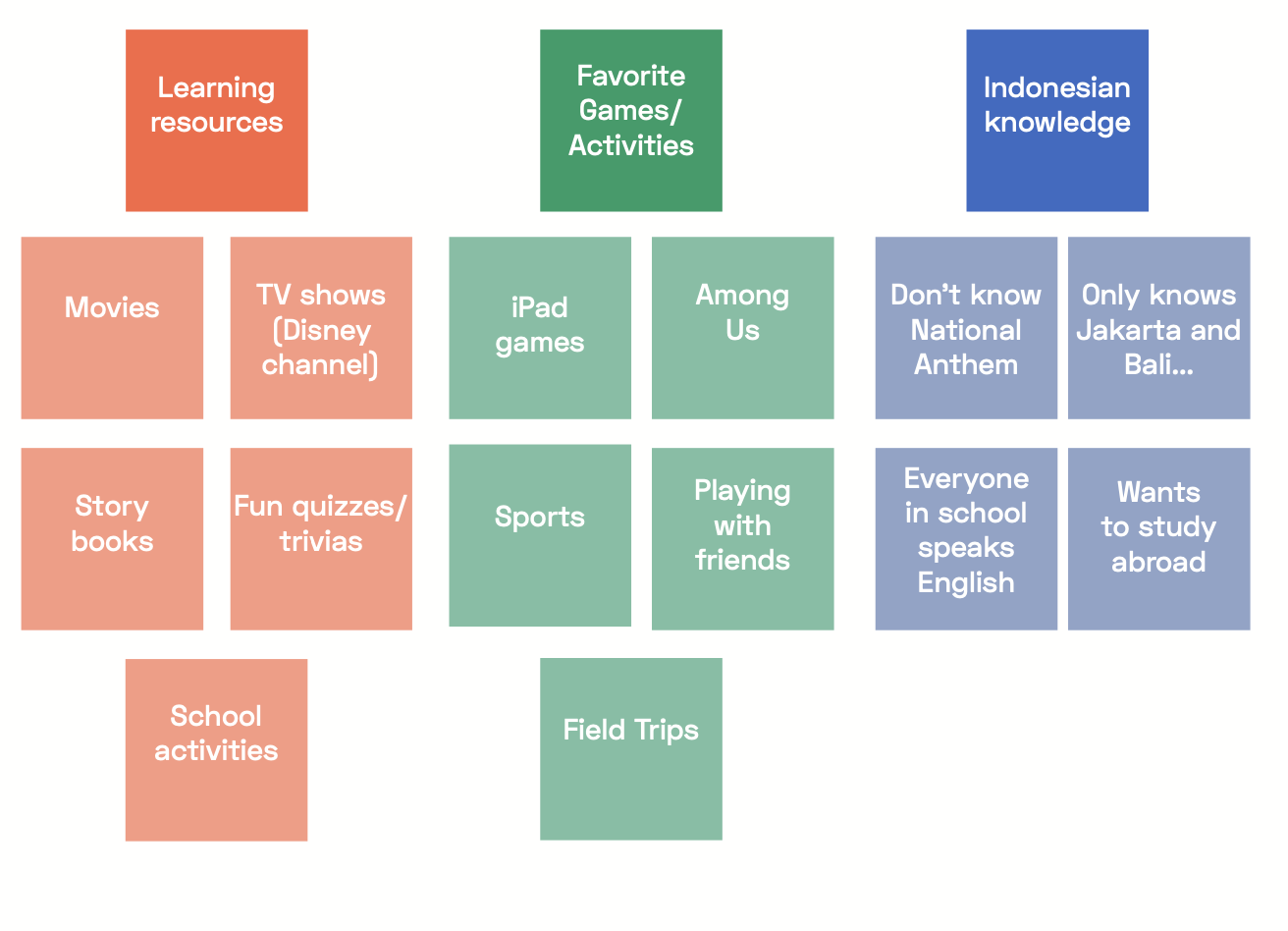
click to zoom!
IDEATION
Contextual Research & User Flow
With the information gathered from my user research, I wanted to gain insights on existing design references that communicated a similar message and had the same motivational intent. These references were: Nike’s New Blood Awards Entry: Work it Out, a Heineken campaign called #OpenYourWorld, a local Indonesian brand by Daniel Mananta called DAMN! I Love Indonesia, and a human centered concept called Human Library that creates a safe space for dialogue.
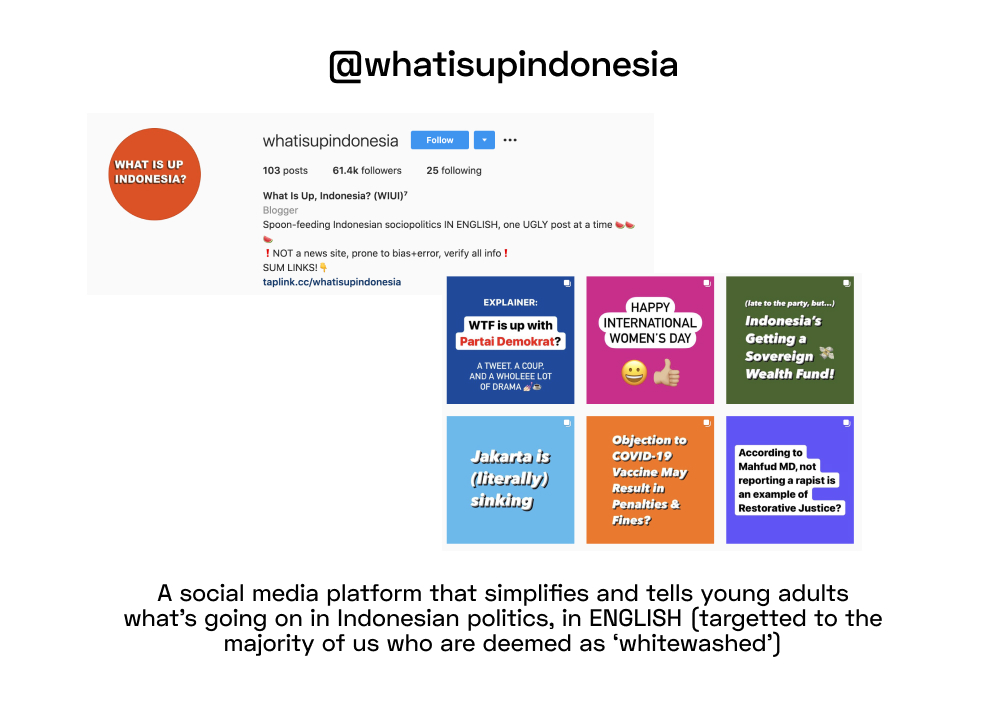

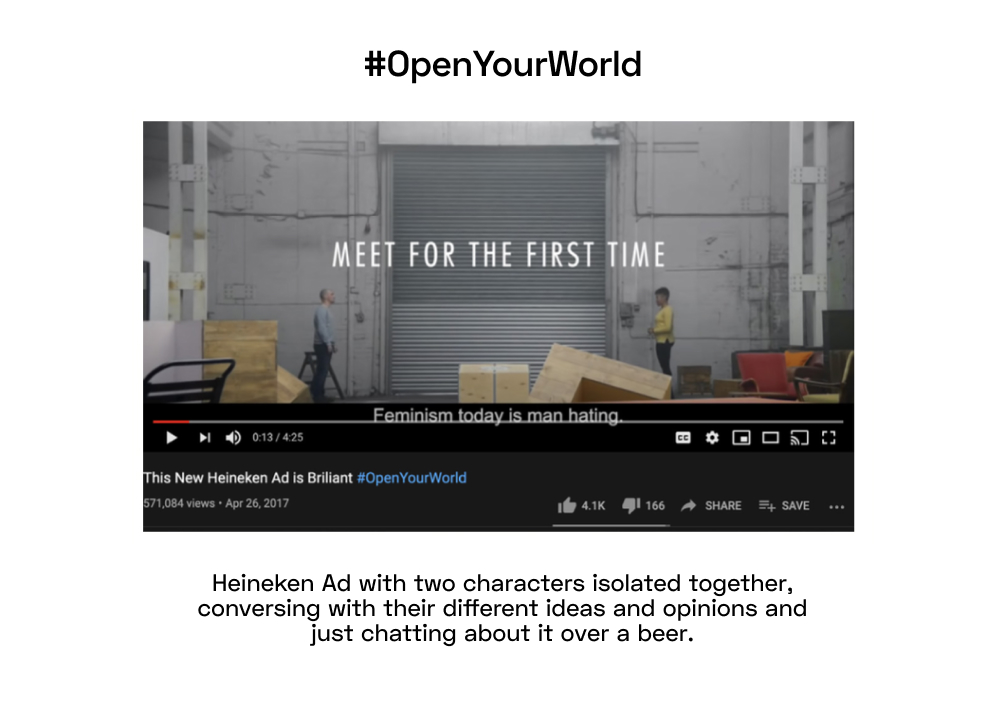


I was inspired to create an interactive exhibition, with an immersive experience that can educate and engage conversations between children. I wanted to incorporate play into the concept of shining a light on how important Indonesian culture is, with an approach that is in line with today’s digital age.
After conducting contextual research about museums in Jakarta (Indonesia’s capital city and my hometown), I decided to create my exhibition at contemporary museum Museum Macan, due to their mission
and values of prioritizing education through access to art. They
are committed to making art accessible to the wider public,
especially young minds and children, and do so by partnering
with schools in Indonesia.

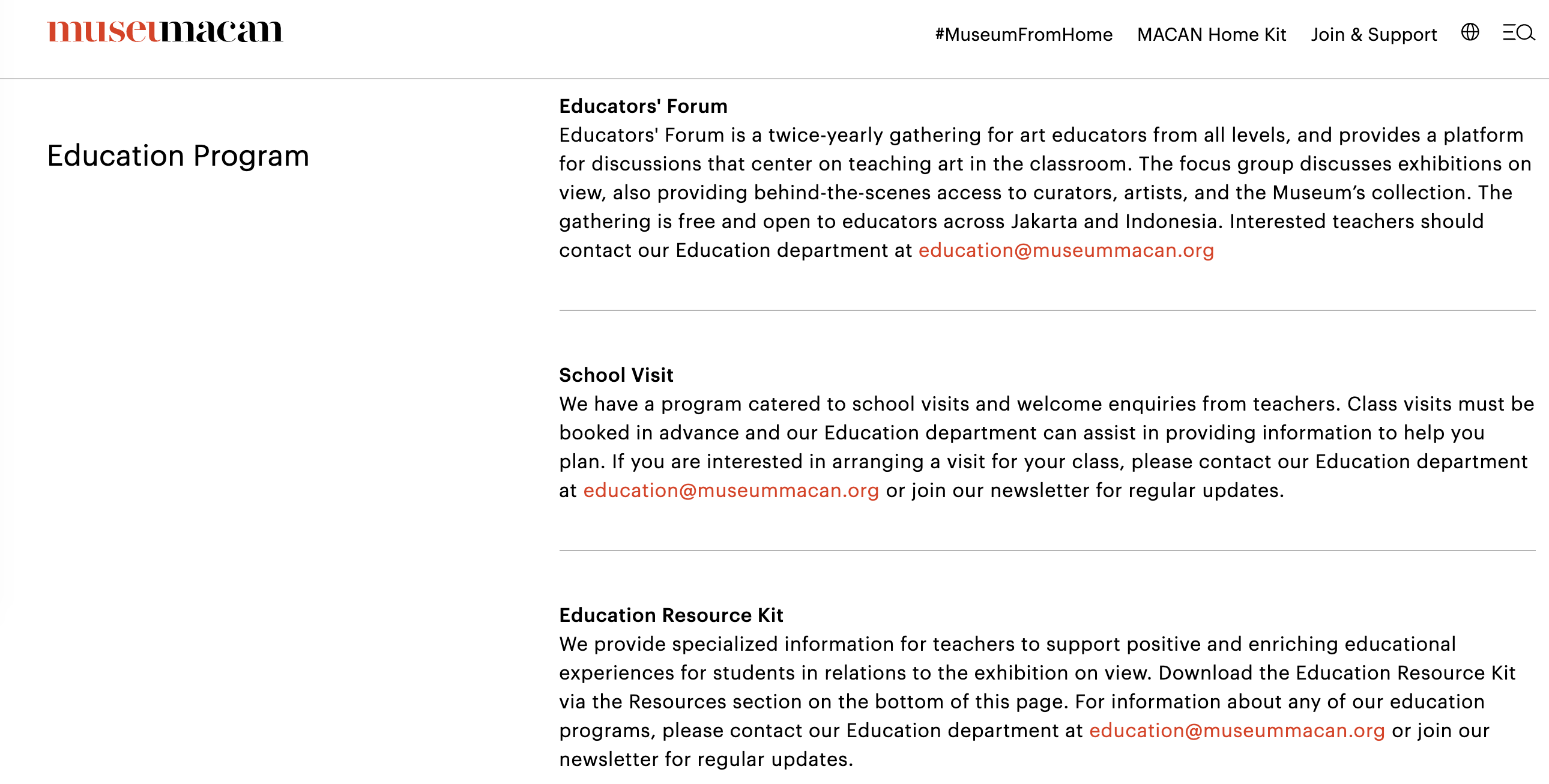
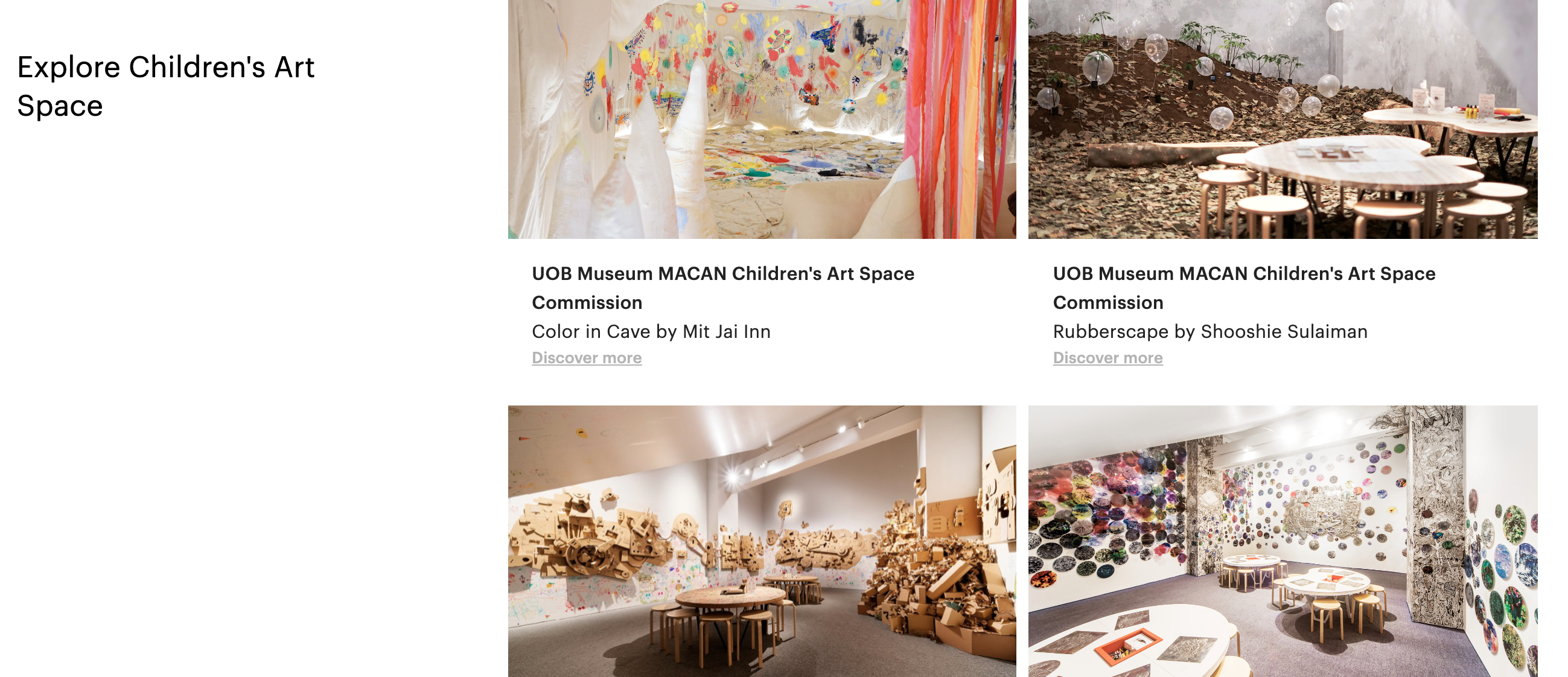
SKETCHES
Visualizing features
To situate and map out the exhibition space, I wanted to use Museum Macan’s Children Art Space. As seen on their floor plan, it’s indicated on number 3, which is a rectangular space. This allowed me to have a vision of how I would like to layout my experience.
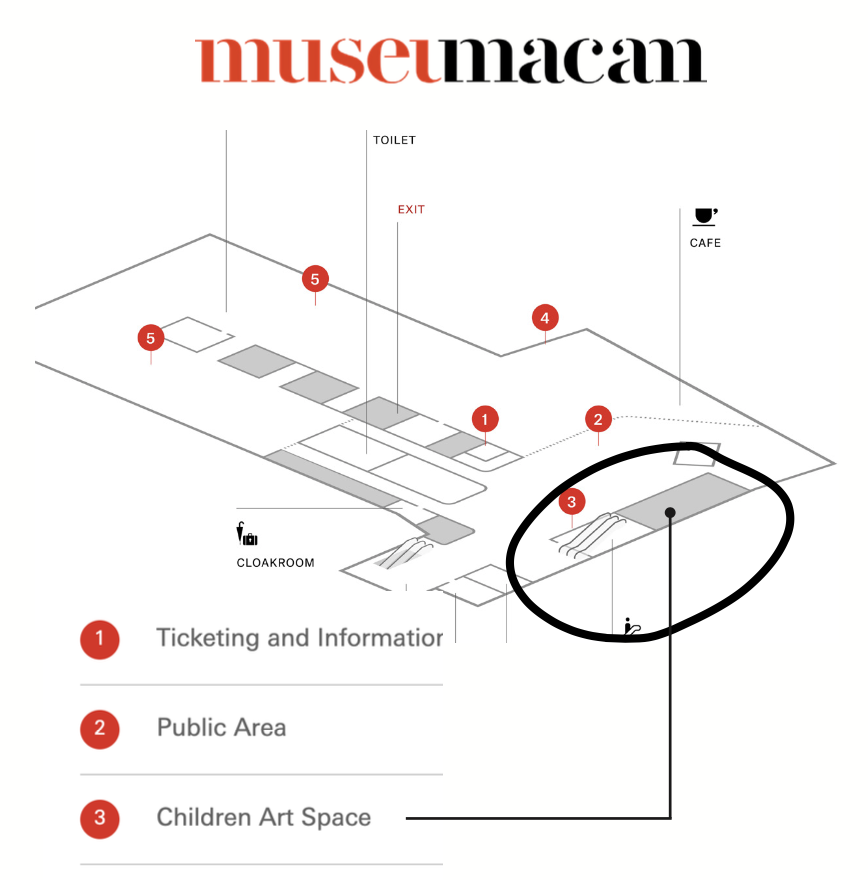
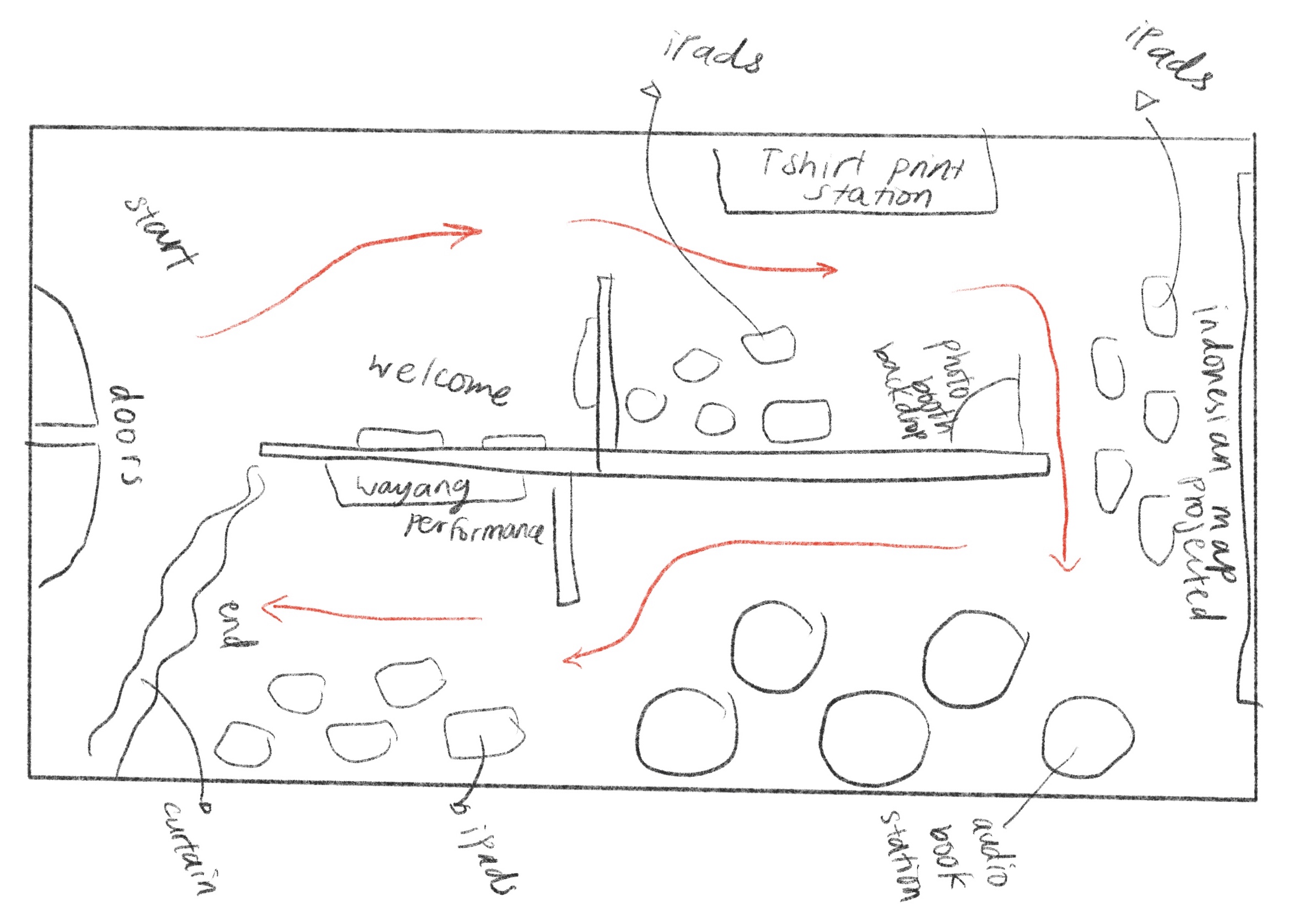
click to zoom!
To cater towards today’s world of advanced technology, I opted to create an digital experience within the physical exhibition. The motive behind this is to encourage children to go from one spot to the next, and ultimately towards the end of the experience. To do this, I sketched out a user flow diagram to identify the flow of the interface.
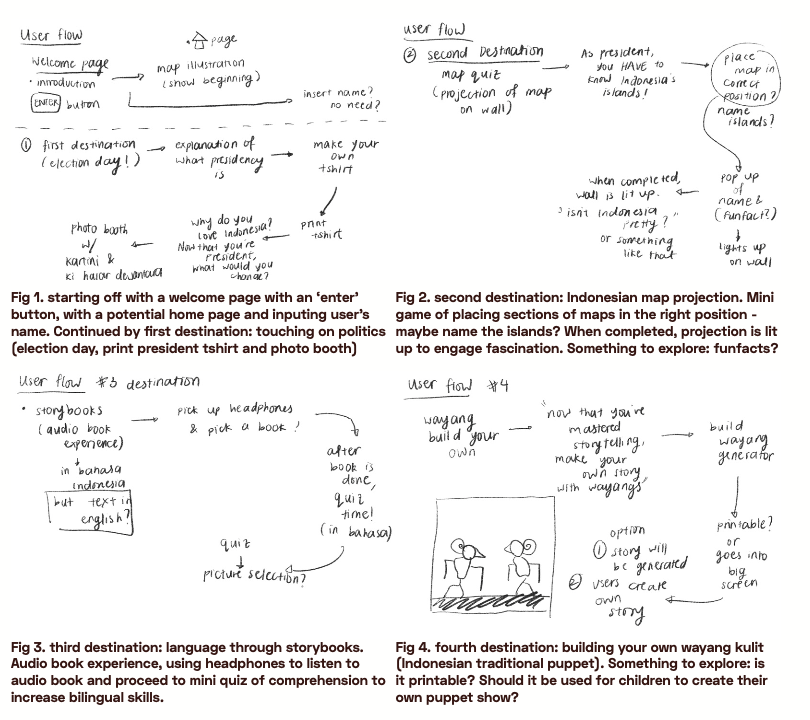
PROTOTYPING
Avatar Development
Inspired by cartoon characters that play a huge role in children’s lives, I illustrated a cartoonized version of the two most prominent figures in Indonesia’s education system:
Ki Hajar Dewantara – founder of the Taman Siswa (directly translated to “Garden of Students”) school system, an influential and widespread network of schools that encouraged modernization but also promoted indigenous Indonesian culture.
Kartini – known for opening the first Indonesian primary school for native girls that did not discriminate based on social standing.
In Pokemon Go, players
get educated about each
character individually and
what their powers are. This
indicates how powerful
cartoons and games are and
how they can unconsciously
educate you.
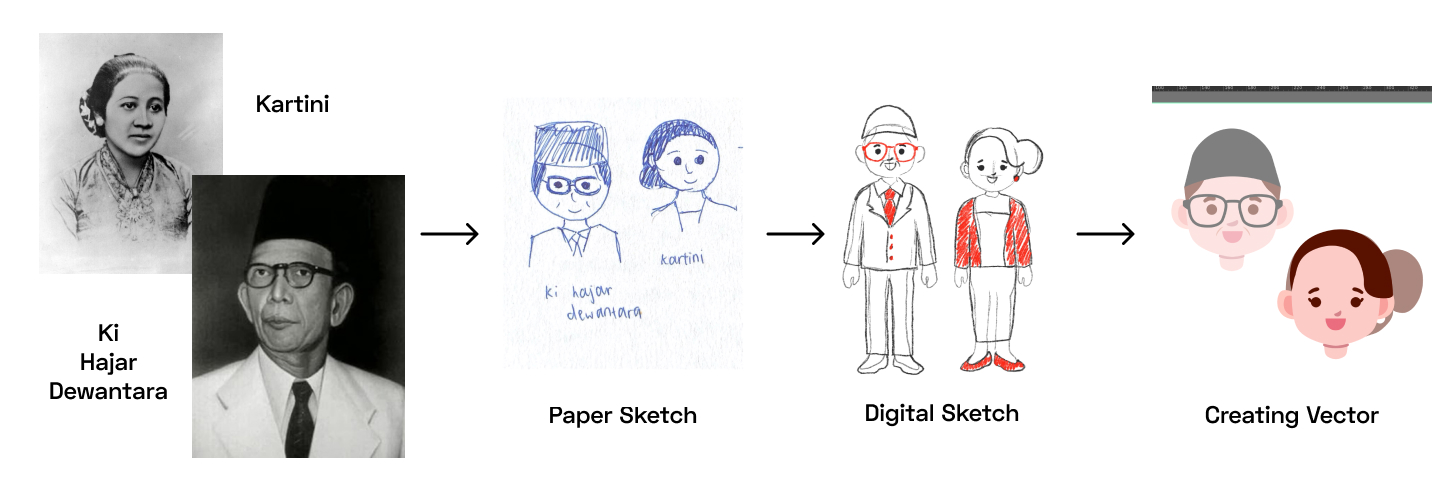
click to zoom!
PROTOTYPING
Augmented
Reality Filter
To create a more interactive experience, I thought of creating augmented reality filters for the mascots to be a part of the experience. Children can take pictures with the characters with their t-shirts, and have fun with it.
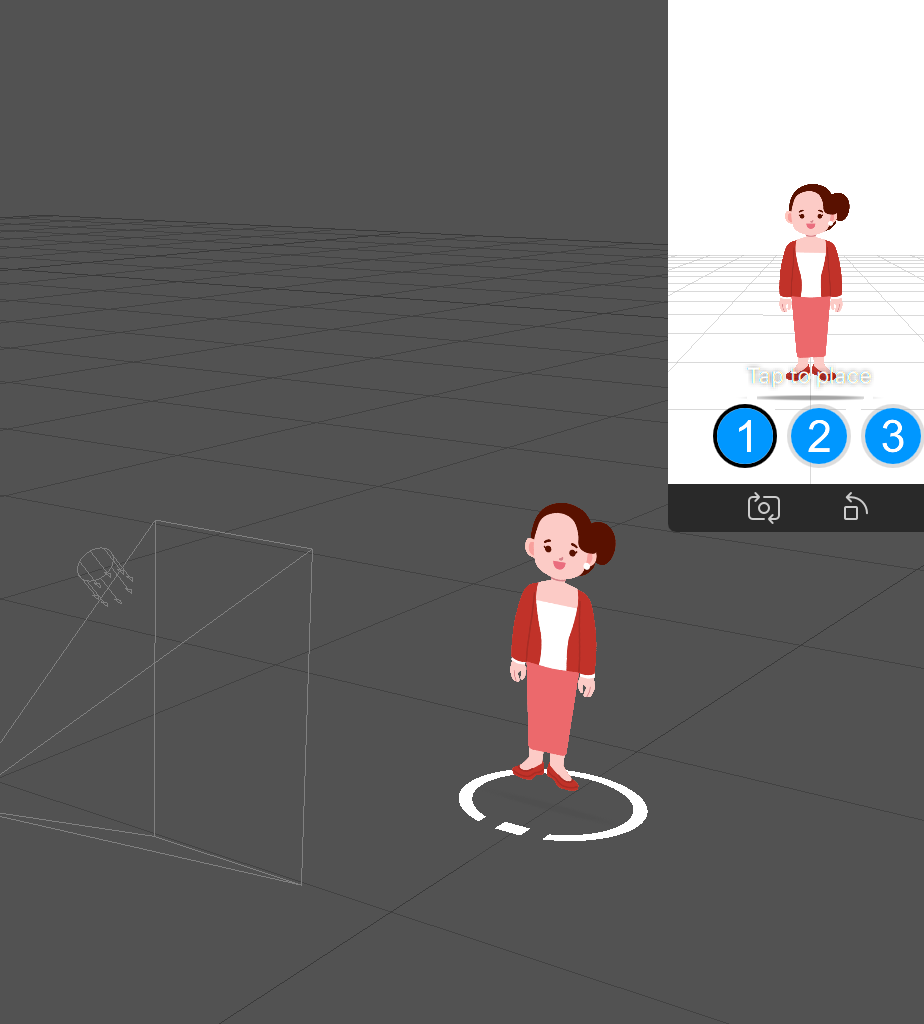
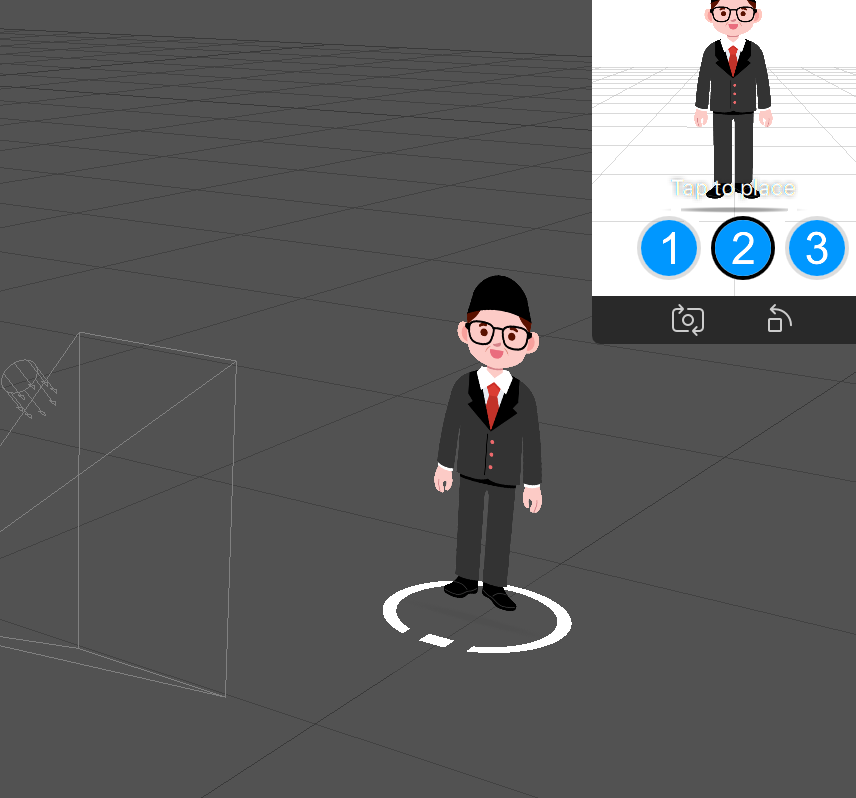
click to zoom!
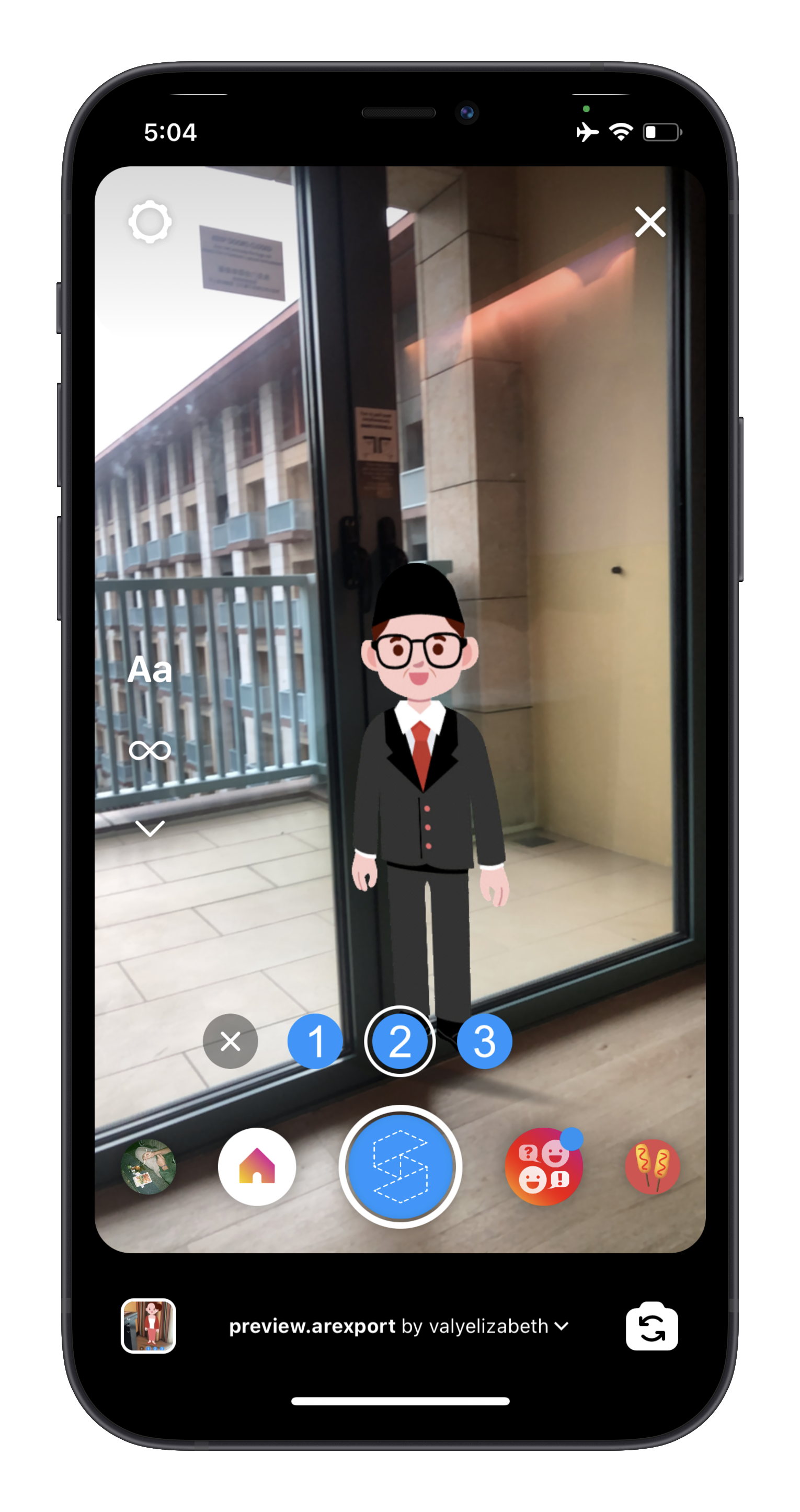
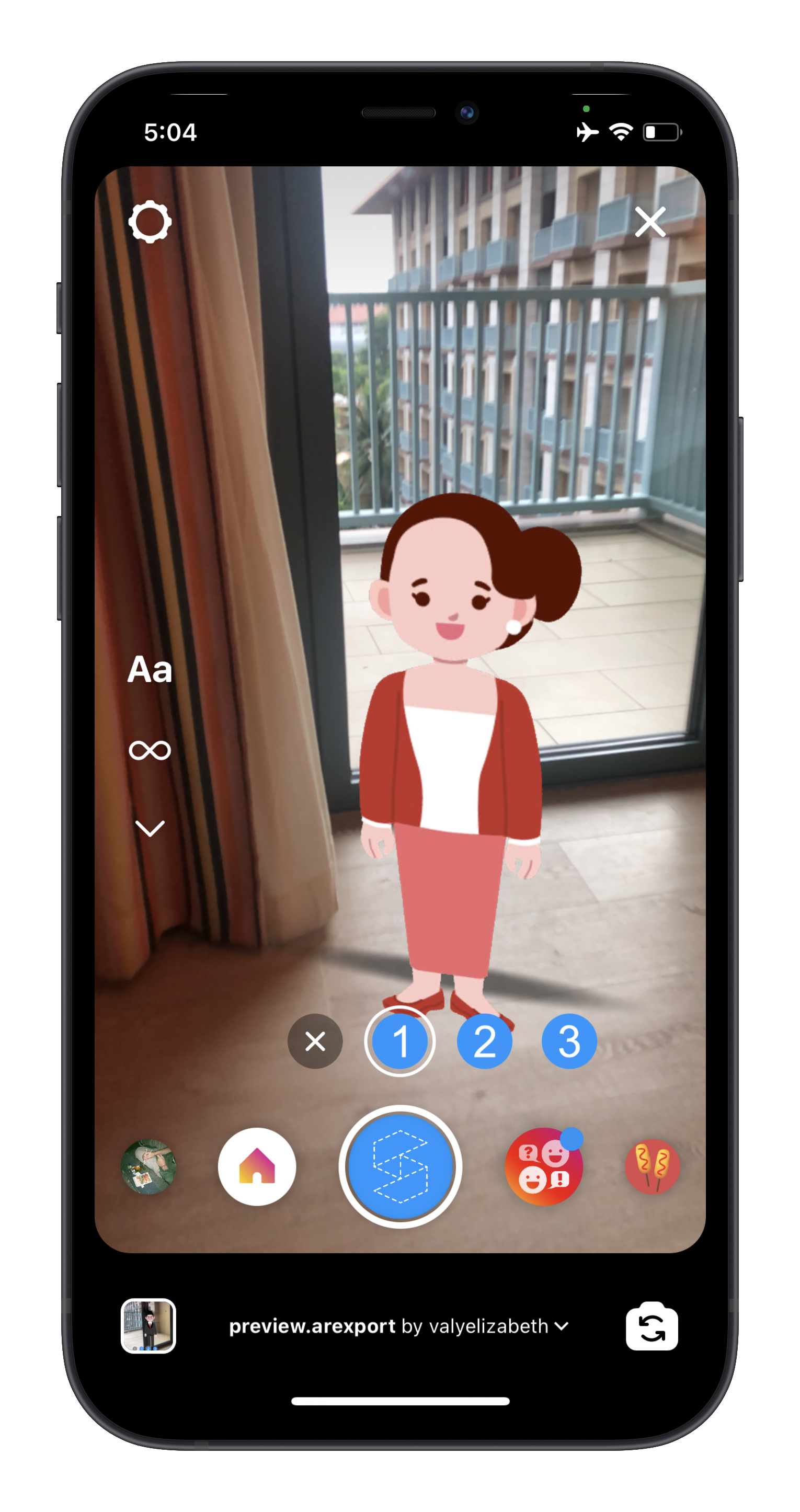
click to zoom!
DESIGN SYSTEM
Visual Identity
I wanted the feel of my experience to be an inviting and youthful one. Rounded typefaces and their softness tend to make them feel friendly and inviting. (They) are often found on food packaging and content aimed at children (typewolf.com). I experimented with different rounded typefaces and decided on Linotte, a typeface made by Joël Carrouché to be used in children related products, and anything that needs to convey a friendly feeling (befonts.com).

Initially, I wanted to use red and white only to embody the Indonesian flag, but I decided to
make the word ‘diversity’ colourful as children love colours and to show diversity as well.

Below is the final design system used throughout the user interface and experience.

Final Experience
‘Unity in Diversity’ (a direct translation of Bhinneka Tunggal Ika, Indonesia’s motto) pays homage to my roots as an Indonesian citizen through an interactive experience for children to learn about their heritage. My outcome includes a digital user interface that is accessible throughout the experience, and offline installations, projections and workshops.
